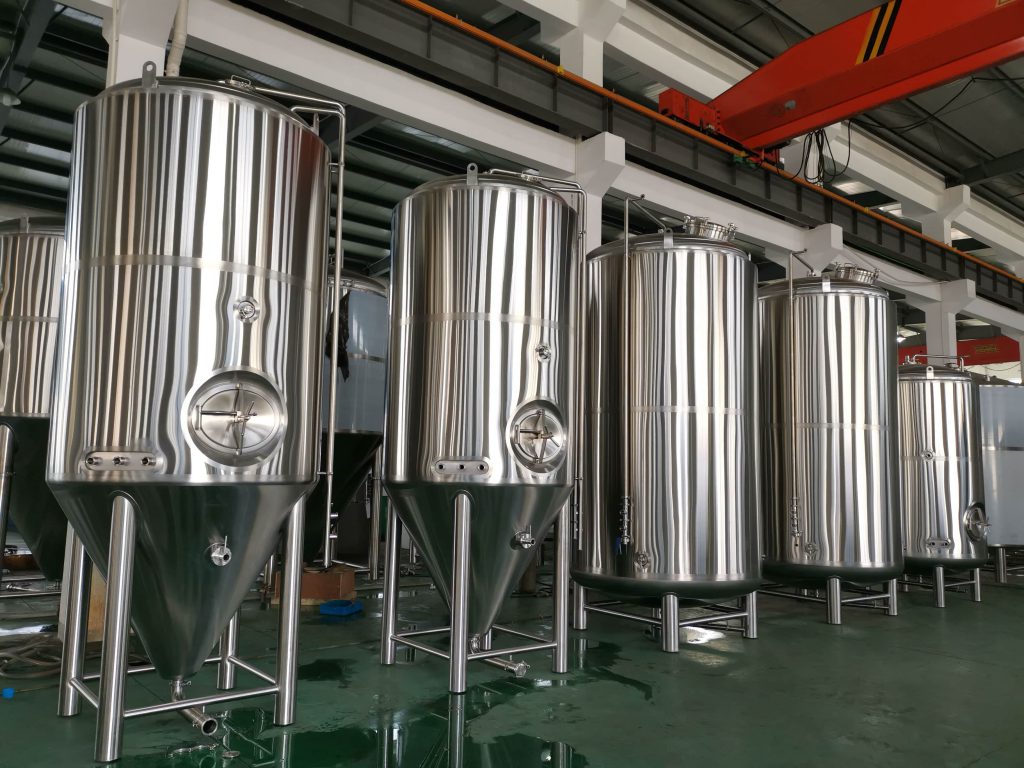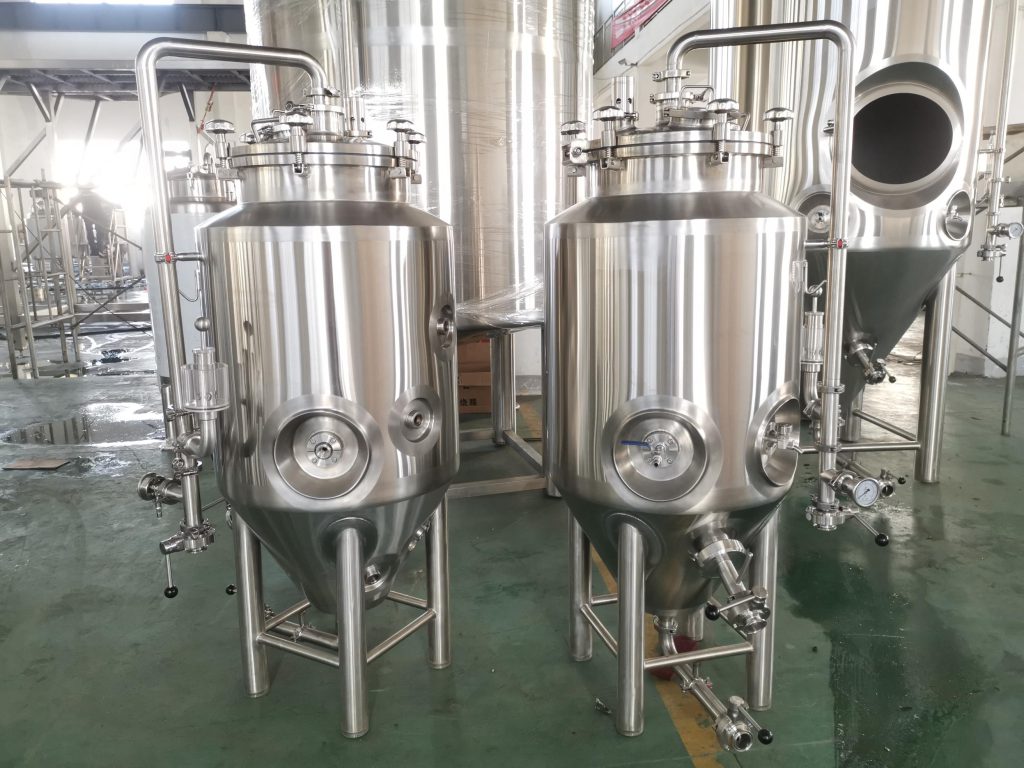Introduction
Starting a microbrewery is an exciting venture, but it requires careful planning and attention to detail. One of the most critical aspects of establishing a successful microbrewery is selecting the right tanks. Microbrewery tanks come in various shapes, sizes, and functionalities, each catering to different stages of the brewing process. In this comprehensive guide, we will explore everything you need to know about microbrewery tanks, from the different types available to the key factors to consider when choosing them. Whether you are a seasoned brewer or just starting, this guide will provide you with valuable insights to make informed decisions for your microbrewery.
Understanding Different Types of Microbrewery Tanks

When it comes to microbrewery tanks, there are several types to consider, each serving a specific purpose in the brewing process. Understanding these types is crucial for selecting the right tanks for your brewery.
Fermentation Tanks
Fermentation tanks are where the magic happens. These tanks are designed to hold the wort as it ferments into beer. They come in various sizes and shapes, including conical and cylindrical, with conical fermenters being the most popular due to their ability to facilitate yeast harvesting and ease of cleaning.
Bright Beer Tanks
Bright beer tanks, also known as serving tanks, are used for the final conditioning, carbonation, and storage of beer before packaging. These tanks are designed to hold the beer at serving pressure, ensuring it is clear, carbonated, and ready for consumption.
Brite Tanks
Brite tanks are similar to bright beer tanks but are specifically used for the clarification and carbonation of beer after primary fermentation. They are typically constructed from stainless steel and equipped with cooling jackets to maintain the desired temperature.
Mash Tuns
Mash tuns are used in the mashing process, where the milled grains are mixed with water to convert starches into fermentable sugars. These tanks are insulated to maintain a constant temperature and often feature a false bottom to separate the wort from the grain bed.
Lauter Tuns
Lauter tuns are used to separate the liquid wort from the spent grains after mashing. They are equipped with a false bottom and sparging system to ensure efficient extraction of sugars from the grain bed.
Key Factors to Consider When Choosing Microbrewery Tanks
Selecting the right microbrewery tanks involves considering several key factors to ensure they meet your specific brewing needs.
Tank Size and Capacity
The size and capacity of your microbrewery tanks will depend on your production goals and available space. It’s essential to choose tanks that can handle your desired batch size while allowing room for future expansion. Keep in mind that larger tanks may require more space and stronger foundations.
Material and Construction
Most microbrewery tanks are made from stainless steel due to its durability, corrosion resistance, and ease of cleaning. When choosing tanks, ensure they are constructed from high-quality stainless steel and meet industry standards. Pay attention to the thickness of the tank walls and the quality of welds, as these factors can affect the tank’s longevity and performance.
Temperature Control
Maintaining precise temperature control is crucial in the brewing process. Look for tanks equipped with cooling jackets or coils to regulate temperature during fermentation and conditioning. Additionally, consider the insulation properties of the tanks to minimize temperature fluctuations.
Pressure Rating
Different stages of the brewing process require tanks with varying pressure ratings. Fermentation tanks typically need to withstand lower pressures, while bright beer tanks and brite tanks must handle higher pressures for carbonation. Ensure the tanks you choose are rated for the appropriate pressure levels.
Cleaning and Maintenance
Efficient cleaning and maintenance are essential for maintaining the quality of your beer and ensuring the longevity of your tanks. Choose tanks with smooth, easy-to-clean surfaces and consider features such as CIP (Clean-In-Place) systems that simplify the cleaning process.
Table: Comparison of Different Microbrewery Tanks
| Type of Tank | Purpose | Key Features | Material | Pressure Rating | Temperature Control |
|---|---|---|---|---|---|
| Fermentation Tanks | Fermentation of wort into beer | Conical shape, yeast harvesting, easy cleaning | Stainless Steel | Low | Cooling jackets |
| Bright Beer Tanks | Final conditioning and storage | Serving pressure, carbonation, clarity | Stainless Steel | High | Cooling jackets |
| Brite Tanks | Clarification and carbonation | Clarification, carbonation, stainless steel construction | Stainless Steel | High | Cooling jackets |
| Mash Tuns | Mashing process | Insulated, false bottom, constant temperature | Stainless Steel | Low | Insulated |
| Lauter Tuns | Separation of wort and spent grains | False bottom, sparging system, efficient sugar extraction | Stainless Steel | Low | Insulated |
Choosing the Right Supplier
Selecting a reliable supplier for your microbrewery tanks is just as important as choosing the tanks themselves. A reputable supplier will provide high-quality tanks, excellent customer service, and ongoing support. Here are some tips for choosing the right supplier:
Research and Reviews
Conduct thorough research on potential suppliers and read reviews from other brewers. Look for suppliers with a proven track record of delivering quality products and reliable service.
Customization Options
Every microbrewery has unique needs, so it’s essential to choose a supplier that offers customization options. This includes the ability to customize tank sizes, fittings, and features to match your specific requirements.
Warranty and Support
Ensure the supplier offers a warranty on their tanks and provides after-sales support. A good warranty and reliable support can save you time and money in the long run by addressing any issues that may arise.
Pricing and Delivery
Compare pricing from different suppliers to ensure you are getting a fair deal. Additionally, consider the supplier’s delivery times and shipping costs to avoid any delays in your brewery setup.
Installation and Setup
Proper installation and setup of your microbrewery tanks are crucial for efficient operation. Here are some steps to ensure a smooth installation process:
Site Preparation
Prepare your brewery site by ensuring adequate space, proper flooring, and necessary utilities such as water, electricity, and drainage. Ensure the foundation can support the weight of the tanks.
Professional Installation
Hire experienced professionals to install your tanks. Proper installation includes securing the tanks, connecting them to utilities, and ensuring all fittings and valves are correctly installed.
Calibration and Testing
After installation, calibrate and test the tanks to ensure they are functioning correctly. This includes checking temperature control systems, pressure ratings, and ensuring there are no leaks.
Staff Training
Train your staff on the proper use and maintenance of the tanks. This includes understanding how to operate temperature controls, pressure systems, and cleaning procedures.
Maintenance and Care

Regular maintenance and care of your microbrewery tanks are essential for longevity and consistent beer quality. Here are some tips for maintaining your tanks:
Regular Cleaning
Implement a regular cleaning schedule using CIP systems to ensure all tanks are thoroughly cleaned after each use. This prevents contamination and maintains the quality of your beer.
Inspections
Conduct regular inspections of your tanks to identify any signs of wear, corrosion, or damage. Address any issues promptly to prevent further damage.
Lubrication
Lubricate all moving parts and fittings to ensure smooth operation and prevent wear and tear. Use food-grade lubricants to avoid contamination.
Replacement Parts
Keep an inventory of replacement parts such as gaskets, valves, and seals. Having these parts on hand can minimize downtime in case of equipment failure.
Conclusion
Choosing the right microbrewery tanks is a crucial step in setting up a successful brewery. By understanding the different types of tanks, considering key factors such as size, material, and temperature control, and selecting a reliable supplier, you can ensure your brewery operates efficiently and produces high-quality beer. Regular maintenance and proper care of your tanks will further enhance their longevity and performance. With this comprehensive guide, you are well-equipped to make informed decisions and create a thriving microbrewery.
FAQ
What are the most common materials used for microbrewery tanks?
Most microbrewery tanks are made from stainless steel due to its durability, corrosion resistance, and ease of cleaning. Stainless steel is also non-reactive, ensuring it does not affect the taste or quality of the beer.
How do I determine the right size of microbrewery tanks for my brewery?
The size of your microbrewery tanks will depend on your production goals and available space. Consider your desired batch size, future expansion plans, and the overall layout of your brewery when choosing tank sizes.
What is the difference between a bright beer tank and a brite tank?
While both bright beer tanks and brite tanks are used for conditioning and carbonation, bright beer tanks are primarily used for storage and serving, whereas brite tanks focus on clarification and carbonation after primary fermentation.
Can I use the same tank for fermentation and conditioning?
While it is possible to use the same tank for fermentation and conditioning, it is generally not recommended. Dedicated tanks for each stage of the brewing process ensure optimal conditions and improve the quality of the final product.
How often should I clean my microbrewery tanks?
It is essential to clean your microbrewery tanks after each use to prevent contamination and maintain beer quality. Implement a regular cleaning schedule and use CIP systems for thorough cleaning.

